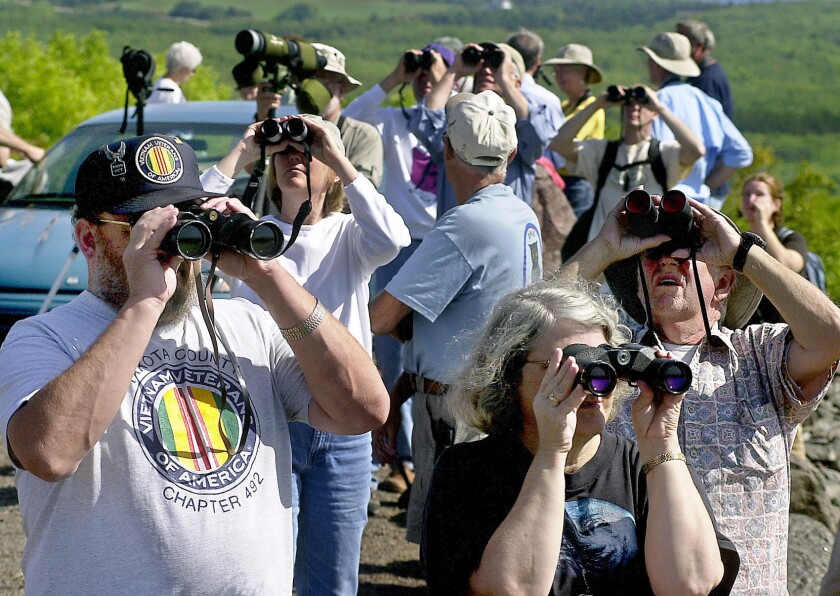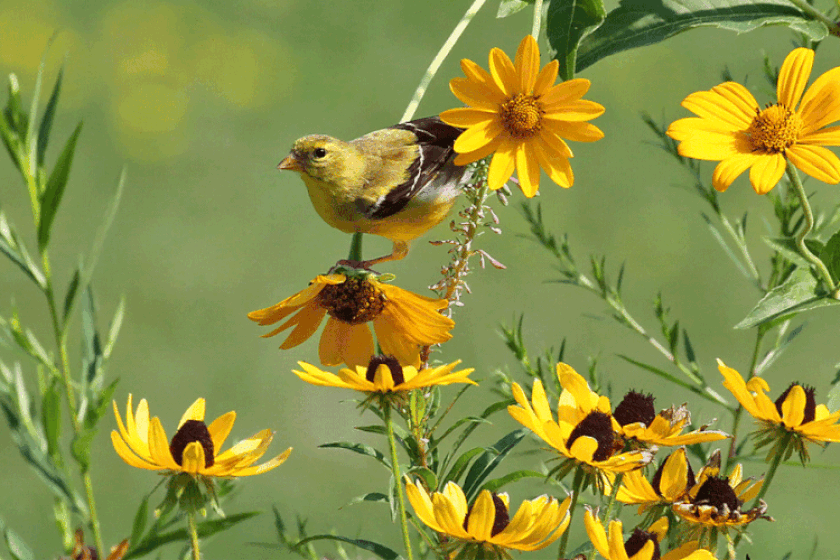In my March reflection, I said ŌĆ£barring the April snowstorm, I think that we should see a slow increase in our local species over the next few weeks.ŌĆØ
As it turns out, we got that snowstorm several times in fact. The birds still pushed through the ice and snow and can be heard singing across the treetops, prairie, and wetlands. IŌĆÖve spent every possible moment out walking the prairie or bellied out near a coulee or wetland.
ADVERTISEMENT
April really is a beautiful time of year. With the large flocks of ducks and geese working across the landscape, IŌĆÖve had ample opportunity for photos. Waterfowl are my favorite, after all, so you could say I ŌĆśdabbleŌĆÖ with ducks.
Blue-winged teal (Spatula discors) - English Coulee diversion Ponds - Grand Forks County, N.D. - Wild
Blue-Winged Teal are little missiles across the prairie. They will jump, fly, and tumble back into the water before you can even blink. They come from every angle, break all of the rules of waterfowl flight patterns, and are a real pain to photograph! They are a common sight across the Prairie Pothole Region, but itŌĆÖs difficult to ever get tired of them. Look for them across the shallow wetlands (and flooded farmlandŌĆ”) across the area. TheyŌĆÖre small, and they are fast, so be prepared!

Hooded mergansers (Lophodytes cucullatus) - Sertoma Park - Grand Forks - Wild
Hooded mergansers, or hoodies, are incredibly unique. Everybody knows that mohawks are the best hairstyle, but combining a mohawk with the maleŌĆÖs high contrast black-and-white pattern is a bold statement! Even the females get in on the trend, but they stick with a more subtle buffy-tan hairstyle. Hoodies are cavity nesters. Females build a nest in a tree cavity or a nest box. After hatching, the ducklings take a leap of faith out of the nest, often from a respectable height. In the spring, pairs will be prospecting nest sites, keep an eye out for them along wooded creeks and lake edges.


Wood duck (Aix sponsa) - Sertoma Park - Grand Forks - Wild
Like the hoodies, wood ducks are also commonly found along timbered waterways, where you find a hoodie, you will likely find a woody too! Once you see them, theyŌĆÖre tough to miss.
ADVERTISEMENT
Those vibrant colors are a stark contrast to the dark and shaded waterways. If you canŌĆÖt see them, you likely will hear them! Males make a "meowing" whistle and females have a rich yodeling hew-eep call. Woodies are also cavity nesters, and they are North DakotaŌĆÖs only native "perching duck."


Mallards (Anas platyrhyncos) - English Coulee - Grand Forks - Wild
IŌĆÖd imagine that when you think of the word ŌĆ£duckŌĆØ you likely think of the Mallard! Mallards are often used as the standard by which all other ducks are compared, like ŌĆ£a teal is smaller than a mallard,ŌĆØ ŌĆ£a pintail has a longer neck than a mallard,ŌĆØ etc. Their ubiquitous nature is not limited to North America. Mallard ranges spread across much of the Northern Hemisphere, residing nearly anywhere there is with a spit of water. IŌĆÖd offer suggestions on where to look for them, but you probably already know where to look.

Northern pintail (Anas acuta) - English Coulee Diversion ponds - Grand Forks County, - Wild
ItŌĆÖs pretty easy to see how the Northern pintail got its name. With ranges spreading across much of the Northern Hemisphere and a pointed pintail, you shouldnŌĆÖt forget this duckŌĆÖs name! Despite their slender and lanky build, they are often one of the first migrants arriving in the North. When the ice cracks open, pinnies usually arenŌĆÖt far behind. Pintail populations tanked between the 1970s and 1980s due to habitat loss and habitat degradation. Luckily, enhancement and restoration of prairie, wetland, and agricultural rangelands have stabilized the Northern pintailŌĆÖs future for now. Like the Blue-Winged Teal, these birds are lovers of the prairie wetlands, so get out of town and take a peek! Remember to ŌĆślookŌĆÖ with your ears too, the males have a beeping-whistle call that is iconic to the species.
Northern harrier (Circus hudsonius) - Rural English Coulee stream - Grand Forks County

IŌĆÖll give you a break from the ducks, but weŌĆÖre not leaving the prairie! Northern harriers are my favorite raptor. They like to ride the air currents low and slow over the grassland. They seem to levitate across the landscape while on the hunt for rodents and birds. Males are smaller than females and have a silvery-gray palette. Females and juveniles are a buffy brown. Both, however, have an obvious facial disk used to funnel sound to their ears. Just like an owl! Once you see them, they are tough to miss. They often hunt along ditchlines, prairie edges, and wetlands. YouŌĆÖll likely seem them gliding easily across the prairie, hardly flapping their wings.
ADVERTISEMENT
May outlook
May is likely to be extraordinarily busy for me. I will be graduating from UND, taking a week-long trip to Yellowstone with my buddies, and starting up fieldwork along the Missouri River around Bismarck. Through it all, I will still be searching for birds. For early May, I am looking to more songbirds on the move through the state. For Yellowstone, I am looking forward to the montane species of the Rockies, both birds and mammals. For late May, I am looking forward to the breeding populations being established, nests being built, and the land filled with birdsong.
Seth Owens is a birdwatcher and photographer in Grand Forks and a frequent contributor to Northland Outdoors.
Additional links:
Website:
Facebook:
Instagram:


















